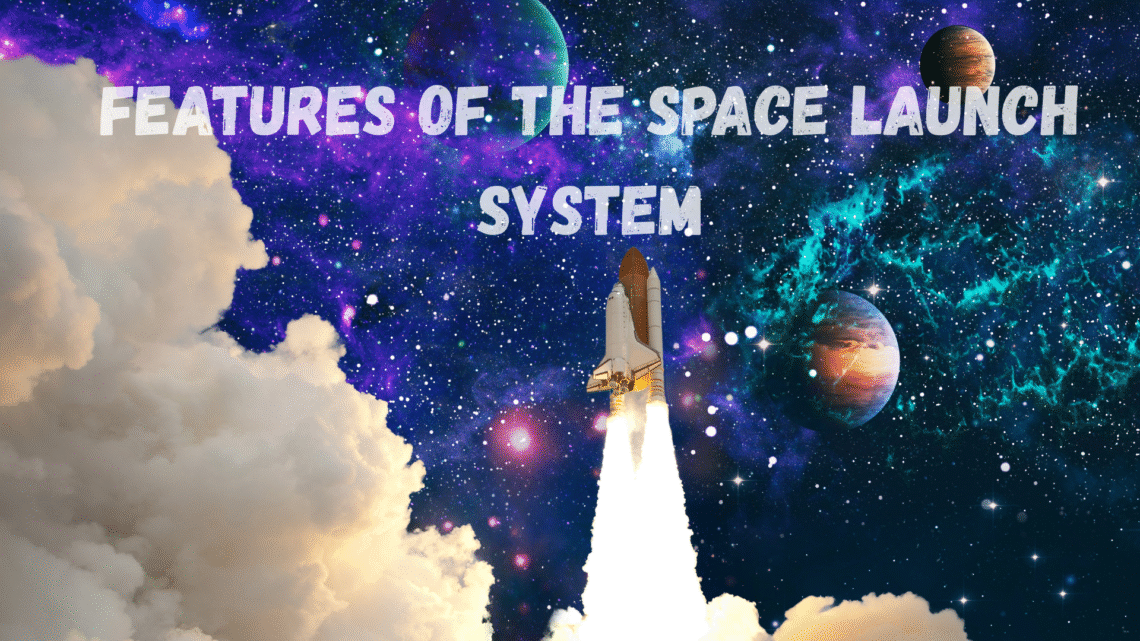Space Launch System (SLS) NASA’s represents the agency’s. As the centerpiece of the Artemis program, the SLS is essential for sending astronauts. They back to the Moon and establishing a sustainable human presence on Mars and beyond. Gaining a deeper understanding of the features of the Space Launch System offers a glimpse into the revolutionary future. Space exploration and humanity’s next giant leap into the cosmos.
1. Unparalleled Lifting Power
One of the most remarkable key features of Space Launch System is its extraordinary lifting capability. NASA designed the system to be the most powerful rocket ever built, surpassing the legendary Saturn V.
- Lifting Capability: The SLS can carry payloads of up to 130 metric tons into low Earth orbit.
- Initial Configuration: The first version, known as Block 1, will lift 95 metric tons.
- Comparison: Saturn V carried around 140 metric tons, but SLS is designed to evolve with more powerful configurations.
This immense lifting power allows the SLS to transport larger payloads and more supplies essential for deep space exploration. In the race for interplanetary travel, this power is not just impressive—it’s critical.
2. Advanced Propulsion Systems
Another standout among the Space Launch System is its state-of-the-art propulsion technology. The SLS uses a combination of upgraded engines and powerful boosters to achieve escape velocity.
- RS-25 Engines: These engines have been upgraded with modern enhancements for better performance and efficiency.
- Core Stage: Fueled by liquid hydrogen and liquid oxygen, the massive core stage provides. The critical thrust needed to lift the rocket off the ground.
This combination of old-tested technology ensures that the Space Launch System delivers reliability and raw power needed for challenging missions.
3. Modular and Evolvable Design
When highlighting the features of the Space Launch System, its modular design stands out as a major advantage.
- Block Configurations: The SLS will upgrade from Block 1 to Block 1B, and then to Block 2, boosting payload capacity each time.
- Interchangeable Parts: Several SLS components are designed to be reused or modified, making future missions easier and more cost-effective.
- Mission Flexibility: The SLS can adjust to transport astronauts to the Moon, supply the Gateway, or deliver cargo toward Mars.
This ability to evolve over time ensures that NASA’s investment remains relevant and capable for decades to come.
4. Human-Centric Safety Features
Safety is the core of any space mission, that’s why one of the Space System focuses heavily on astronaut safety.
- Orion Spacecraft: The SLS is built to carry the Orion spacecraft, specifically designed for long-duration. Deep space missions with advanced life support systems.
- Launch Abort System: Orion includes a launch abort system that can rapidly pull the crew away from the rocket
- Redundancy Systems: Critical systems in the SLS and Orion have backups to ensure the highest levels of safety.
5. Enabling Deep Space Exploration
Finally, perhaps the most inspiring of the 5 key features of the Space Launch System is its role.
- Moon Missions: NASA’s SLS will carry the first woman and next man to the Moon through the Artemis program.
- Mars Missions: The SLS will be a crucial component in future Mars exploration missions, providing the lift capability. They needed to send astronauts and cargo to the Red Planet.
The SLS isn’t just a launch vehicle; it’s a pathway to a multiplanetary future for humanity.
Why the Space Launch System Matters

Understanding the features of the Space Launch System helps highlight why it’s more than just another rocket. It represents decades of technological progress, careful planning, and the human spirit of exploration. Each successful launch will bring us closer to scientific discoveries, technological innovations. The ultimate dream of living and thriving beyond Earth.
A Glimpse Into the Future
NASA’s vision with the Space Launch System is clear: to expand humanity’s reach into the cosmos. With its unmatched lifting power, advanced propulsion, modular flexibility, human-centric design, and mission focus on deep space exploration, the SLS will shape the future of space travel.
As we stand on the brink of a new era in space exploration, the 5 key features of the Space Launch System remind us of the incredible feats humans can achieve through science, collaboration, and determination.
The Space Launch System is a marvel of modern engineering, embodying the dreams and aspirations of a generation eager to reach for the stars. By understanding the 5 key features of the Space Launch System, we gain a deeper appreciation for the effort, innovation, and vision that have gone into making it a reality. The future is closer than ever, and the SLS is the rocket that will take us there.
Whether you are a space enthusiast, a student, or simply curious about the future of human exploration, keeping an eye on the Space Launch System is essential. Its success will define humanity’s next giant leap into the unknown.








Leave a Comment